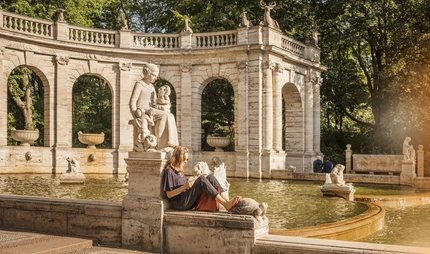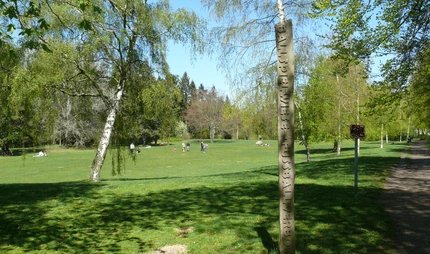
Humboldthain Park
Bats in the bunker
First have an adventure, then enjoy the view: climb to the top of the flak towers in Humboldthain and relax on the green roof of Berlin.
The sun’s shining, the trees are shady and the picnic blankets are spread out on the grass. The scent of the rose garden is magical. In the middle of Berlin’s Gesundbrunnen district, Volkspark Humboldthain is a green oasis. But looks deceive – this park is an adventure playground!
Parks, gardens and bunker hills
Volkspark Humboldthain is a memorial garden, originally conceived by the landscape architect Gustav Meyer. The park was named after the great natural historian Alexander von Humboldt. Work began on 14 September 1869, the 100th anniversary of Humboldt’s birth. Seven years later the park was completed.
In the Second World War, Humboldthain was a major target for air raids because of the bunkers and anti-aircraft guns set up there. After the war, razed areas and bomb craters left very little sign of the original layout, so Berliners turned the situation to the park’s advantage. The bunkers were filled in, and gradually vegetation grew over them. Rubble was piled up to form a toboggan run and the hill now known as the Humboldthöhe, which is now an excellent viewing platform. A society called Berliner Unterwelten e.V. has reopened some of the underground parts of the demolished flak tower and offers guided tours in summer. In winter, the rooms are inhabited by around 250 bats of six different species, which makes the bunker the third-largest winter shelter for bats in Berlin.
Climbing, jogging, swimming: leisure activities in Humboldthain
The north wall of the big bunker and the south wall of the smaller one are used by the Berlin section of the German Alpine Association (DAV) for competitive climbing to the highest degree of difficulty. But don’t worry, there are also paths for walkers and joggers to get up the hill. On the edge of the park, on Wiesenstraße, are the Humboldthain open air swimming baths. With diving boards, a slide and a paddling pool, there’s fun for swimmers of all ages.
If you like it a bit more relaxed, at Humboldthain, just like in Kreuzberg, there is a vineyard whose harvest is getting more successful each year due to climate change. Every year, around 200 bottles of wine are produced. Its grapes are also used to make Humboldthainer Hauptstadtsekt, but the capital city’s sparking wine is not for sale: it’s only served on special municipal occasions.



